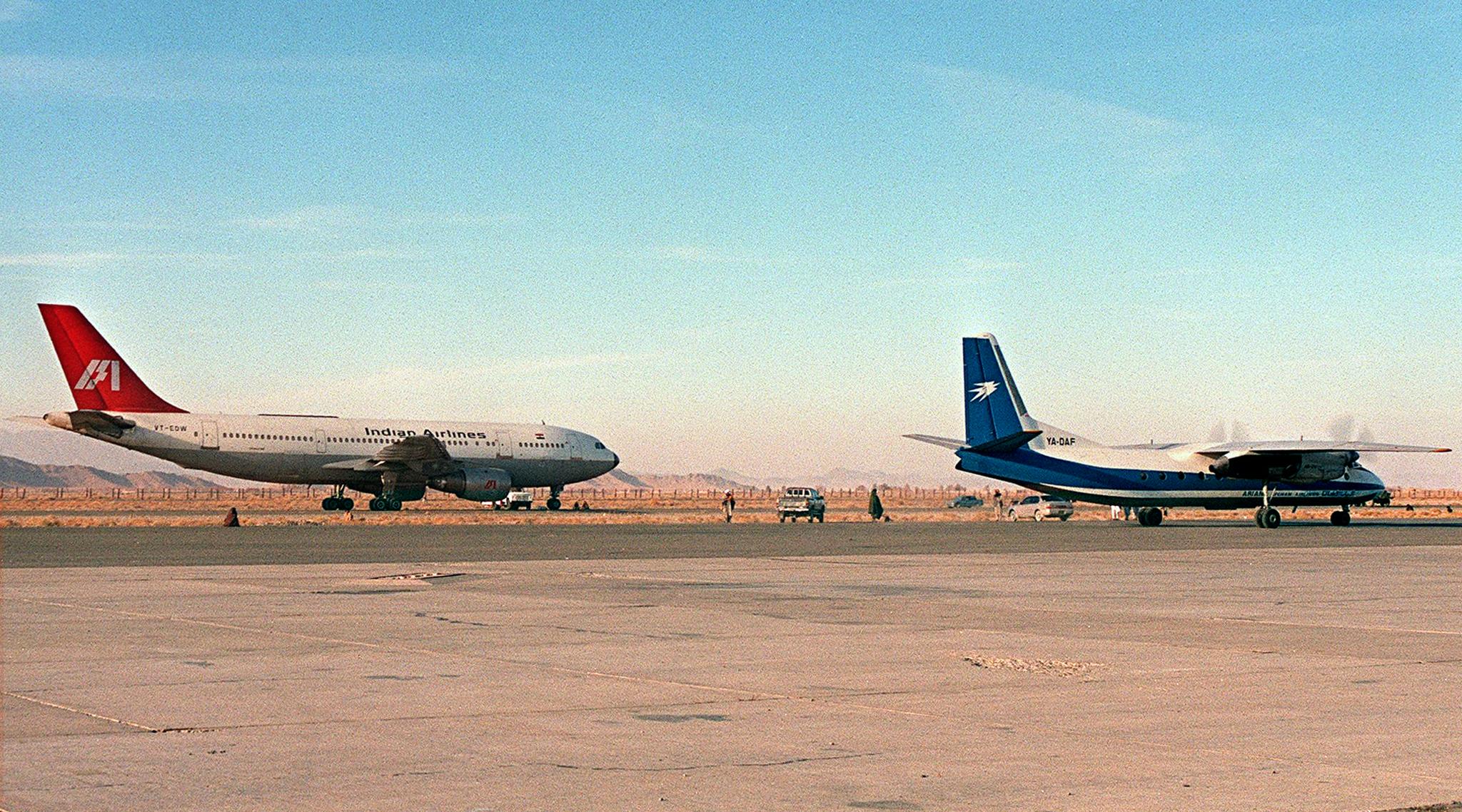Netflix’s IC 814: The incredible true story behind new Kandahar plane hijacking series
New series follows the longest hijack in Indian aviation history
A new Netflix series follows the hijacking of an Indian Airlines flight in December 1999 that took seven days to resolve, remaining the longest seizure of an aircraft in Indian aviation history.
Adapted from the book Flight Into Fear by Captain Devi Sharan, the pilot on board the hijacked flight, IC814: The Kandahar Hijack delves into the crisis from various perspectives – the politicians and bureaucrats in Delhi’s War Room to the terrified hostages on board.
Five masked men hijacked the aircraft on 24 December 1999, 40 minutes after it took off from the Tribhuvan International Airport in Kathmandu, bound for New Delhi.
Sharan was forced to fly the plane into Pakistani airspace, where he did not receive clearance to land, despite the Indian High Commission in Pakistan making repeated requests. The plane then landed in Amritsar a little before 7pm, with barely 10 minutes worth of fuel left.

In Amritsar, the Indian authorities were tasked with delaying the refuelling of the plane for as long as possible. But at the same time, the hijackers wanted the plane back in the air, with permission to land in Pakistan.
“Please get permission to land at OPLA (Allama Iqbal International Airport in Lahore)... otherwise they are ready to crash anywhere ... they have already selected 10 people to kill,” Sharan said to the Indian Air Traffic Control, according to India Today.
Chaos ensued, as he made contact with the ATC again, telling them that the hijackers had begun to kill hostages. Soon after, at 750pm, he took off.
“We are all dying,” he told the ATC.
The hijackers forced Sharan to fly the plane to Lahore, where the pilot made a desperate landing despite not getting permission from Pakistan’s ATC, which turned off all lights and navigational aids at the airport.
After refuelling, the plane once again took off from Lahore and attempted to land in Dubai. After being refused permission there as well, the flight landed at the Al Minhad Air Base in the UAE. Here, the hijackers released 27 of the 176 passengers, including the body of 25-year-old Rupin Katyal, who had been fatally stabbed by the hijackers.

Watch Apple TV+ free for 7 days
New subscribers only. £8.99/mo. after free trial. Plan auto-renews until cancelled

Watch Apple TV+ free for 7 days
New subscribers only. £8.99/mo. after free trial. Plan auto-renews until cancelled

After this, the plane finally landed in the hijackers’ original destination, Taliban-controlled Afghanistan’s Kandahar airport.
It was here that the remaining hostages waited for the next six days, while the then prime minister Atal Bihari Vajpayee’s Bharatiya Janata Party-led government negotiated with the terrorists who wanted India to release 36 prisoners in exchange for the hostages.
The five Pakistani hijackers were identified as Ibrahim Athar, Shahid Akhtar Sayed, Sunny Ahmed Qazi, Mistri Zahoor Ibrahim, and Shakir, and belonged to Harkat-ul-Mujahideen (HuM), a Pakistan-based Islamist terror group.
Their demands were simple: they wanted the release of HuM members Ahmed Omar Saeed Sheikh and Masood Azhar, and Pakistan-backed Kashmiri militant, Mushtaq Ahmed Zargar.
After intense negotiations and internal handwringing, on 30 December the Indian government managed to convince the hijackers to release all hostages for three terrorists.
“I must have slept around 3 am. I woke up at 8 am. The usual Afghan bread was served for breakfast. I did not feel like eating. I was worried that the millennium would end in hours and I would be missing the celebrations. I was thinking of many things,” reads the account of 41-year-old merchant navy captain Kollattu Ravikumar, one of the hostages on the flight.
All three terrorists who were released have since been implicated in terror attacks, including the attack on parliament of India in New Delhi in 2001, the terror attacks in Mumbai in 2008, the kidnapping and murder of The Wall Street Journal reporter Daniel Pearl in 2002.
Once the hostages were freed, Indian authorities assumed that the Taliban officials would arrest the hijackers and secure the released terrorists. Instead, the Taliban drove them across the border, towards Quetta in Pakistan.

The BJP government faced severe criticism over failing to resolve the crisis sooner, and especially over allowing the flight to leave Indian territory.
AK Doval, the 64-year-old former Intelligence Bureau Chief who led the four-member negotiating team to Kandahar, described it as a “diplomatic failure” and a “bloody disgrace” for India.
“There was a diplomatic failure on our inability. When we know that the US is totally against the terrorists, they are against the Taliban, they had total hold over the UAE, we could not leverage this thing. Our Ambassador could not even get inside the airport (in Abu Dhabi),” he said to news agency Press Trust of India.

The series has an ensemble cast, and is created by Anubhav Sinha and Trishant Srivastava.
“Trishant, the writer, and I dived in thinking most of the information is available online. Documentaries and vlogs have been made, articles have been written, so we wanted to sink our teeth deeper for a more succulent bite,” Sinha told Variety.
“We met officials engaged in running the rescue mission from Delhi, and passengers and the crew told us the story inside the aircraft. Adrian Levy, an eminent journalist, author and filmmaker from London came on board and an all-new international canvas unfolded before us.

“What went on across those seven days turned out to be a compelling story that cuts through chilling and thrilling tactical and diplomatic manoeuvres that had to be told. The viewers must know this story that has never been told inside out before with a cast I don’t know if I can put together again.”
IC 814: The Kandahar Hijack will be available to stream on Netflix from 29 August.


Join our commenting forum
Join thought-provoking conversations, follow other Independent readers and see their replies
Comments